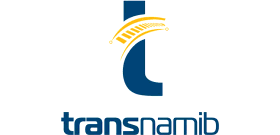 TransNamib Introduces New Train Operations System To Improve Efficiency
TransNamib Introduces New Train Operations System To Improve Efficiency
TransNamib has through its Technology & Innovation department which was established in 2019, used its internal resources to develop a Transportation Management System (TMS) to replace the TRACCS legacy system.
The new system is expected to increase TransNamib’s visibility on its movement of freight by rail and ultimately increase the company’s operational efficiency. TransNamib through the implementation of its Integrated Strategic Business Plan has recognised the role technology will play in assisting the company to move forwards towards reaching its strategic objectives.
It is against this background that we are continuing to explore various relevant technological developments, with innovation as a key driver for any implementation in the future. The Technology and Innovation department has for the past two years been working on the development of a Transportation Management System (TMS) to replace the TRACCS legacy system. The requirements of TMS were based on the current operational processes but have been streamlined, and built on a modern platform, that allows operational staff to quickly access, enter and review operational tasks and information.
The new TMS system has started to reduce TransNamib’s costs of operations, as the outdated system included many manual processes which included the operations department running high costs on telephone calls that had to be made to ensure the movement of the freight. With the new system, once information has been loaded, visibility is immediately available at all our stations.
On the new system, information is captured per section of the railway line, so once the train is loaded you will be able to see what has been loaded at the last section or station. This system brings the company closer to real-time visibility for our train operations which will allow us to improve our service delivery to our clients as well as allowing us to manage our rolling stock better.
TransNamib is currently working on Phase 2 of the project which will also allow customers access and interact with the system. The newly implemented system will yield numerous benefits including standardised processes and data across all depots support complete, in a stable, user friendly with end-to-end visibility. TMS will allow for improved demand forecasting and better coordination between Enterprise Resource Planning (ERP) and sales systems that will result in more accurate forecasts, leading to more efficient ordering and improved margins. TMS will also support the quote to invoice and billing process.
TransNamib will have control and visibility over the entire lifecycle of a transaction—from the way an item is ordered to the way the final invoice is processed—provides full insight into cash flow and financial commitments.
According to the Executive: Technology and Innovation, Logan Fransman: “The effective use of technology will be the major driver of transformation in our operations. Thus, digitisation and streamlining of processes is the future. Our main objective is making the adoption and use of digital technology as advantageous and as easy as possible. It is a competitive necessity and game-changer that requires constant improvements for customer and user experience and functionality.”
TransNamib’s Technology and Innovation department will continue to deliver tailored solutions to assist the organisation to achieve its vision and mission.
